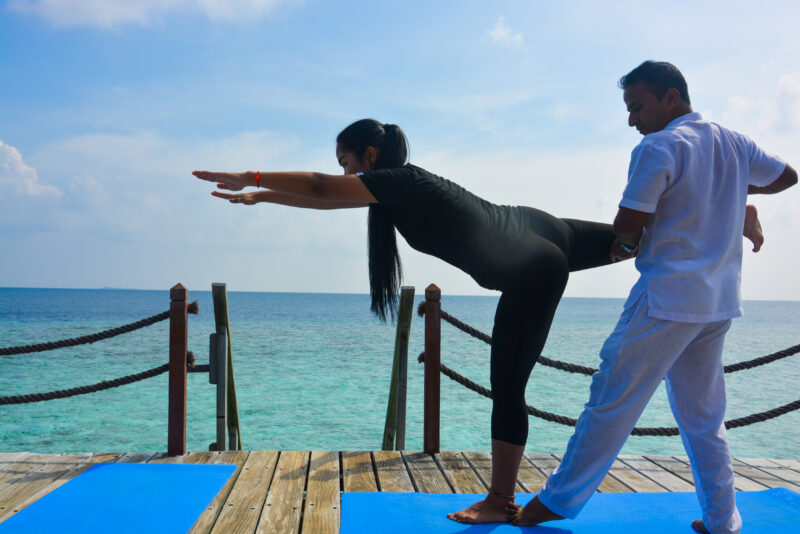All yoga practices are known to have their wellness and therapeutic advantages for the human body, mind, and soul.
Since the evolution of yoga arose nearly 5,000 years ago, yoga therapy has deeply established itself in Indian civilization and the world.
Yogis and gurus have practised yoga in the Himalayas for decades. With further advancement, yoga therapy slowly came into existence globally.
Yoga masters used it to determine the root of the problem and prescribe a proper routine to alleviate the ailment.
Sri Tirumalai Krishnamacharya is considered one of the masters of yoga therapy and advanced yoga practices.
In 1900, he started Yoga Chikitsa, now considered one of the leading practices for tackling problems related to physical and mental disabilities.
Indian philosophers profounded three kinds of sicknesses, and these were:
Yoga Chikitsa considers every aspect of human life—physical, emotional, mental, and spiritual. A yoga teacher or therapist observes a person’s condition and recommends a follow-up procedure.
Breathing Deeply Yoga Therapy focuses explicitly on recovering deformities and healing by applying techniques such as correcting body posture, breathing techniques, and meditation.
Even though most people take their first steps towards yoga through physical exercise, the yogic lifestyle is much more than a few stretching exercises and yoga poses.
It is an easy tool for those who cannot stay on a yoga mat for long. It combines yoga postures, stretching movements, and body part alignment with deep breathing.
It combines yoga exercises with a stretching module to attain proper body alignment. Each individual must select specific Yogic Chikitsa fundamentals.
Yogic science plays a symbolic role in the practice of therapeutic yoga. It has a great collection of several modules that include different practices. What is Yoga Therapy? It is simply:

Yoga Chikitsa goes beyond limited physical well-being. They go deeper and directly affect mental and emotional equilibrium.
Your yoga therapist applies particular Asanas to improve blood circulation, breath work for calmness, stretching movements for enhancing flexibility, and meditation for inner balance.
You may feel the changes, and you can improve and heal accordingly. In contrast, much is yet to come regarding its therapeutic characteristics.
The following are some of the scientifically proven health benefits of yoga Chikitsa are as under :
Additionally, we also offer you a chance to practice and learn several other forms of alternative therapies, such as:
Posture correction, Breathwork, Regular stretching movements, and a correct routine. Here, posture correction is related to aligning body parts and keeping the body in a perfect position. Breathwork is taken from pranayama, which increases the efficiency of the lungs. Regular stretching movements are the targeted areas to focus on, and a correct routine is followed up after the consultation with your yoga therapist.
Yoga class is a sequence of yoga asanas, pranayama, and meditation, while yoga chikitsa includes a regular checkup by a therapist and to keep the exercises routine regularly. Yoga therapy has different modes according to a person’s needs and requirements.
Yoga therapy is convenient for yoga beginners who are unable to perform yoga postures or have difficulty regularly practising. Yoga chikitsa simply prepares the body for daily exercises. It is very effective in correcting body posture and aligning body parts.
Yoga chikitsa is a traditional practice of the yogic lifestyle. In ancient times, it was mainly practised as following the eight limbs of yoga: yama, niyama, asana, pranayama, pratyahara, dharana, dhyana, and samadhi. In the modern world, it is mostly used as a physical tool for keeping the body in perfect shape.